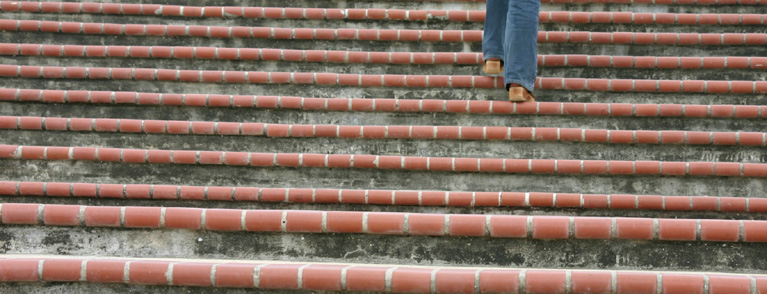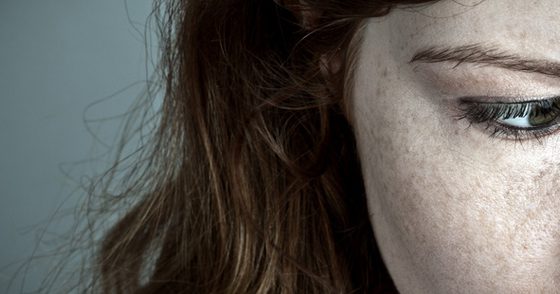In an interview with HAUSARZT PRAXIS, Barbara Zindel, dipl. Physiotherapist FH, Rheumaliga Schweiz, the project “Living mobile and safe at home”. The pilot phase in Lucerne has been a success so far. The aim of the project is to promote fall prevention throughout Switzerland.
Ms. Zindel, the aging of society is a highly topical issue. Older people are often also no longer good on their feet. What are the statistics on falls in Switzerland, and what developments have there been in this regard in recent years?
Barbara Zindel:
The Swiss Federal Statistical Office has published data showing that between 1900 and 2011, the proportion of older persons (over 64) increased from 5.8% to 17.2%, and the increase was particularly pronounced among the elderly (80 years old and over). Society as a whole is therefore getting older, which also has considerable consequences for fall statistics: In Switzerland, a good third of people over 65 fall at least once a year. 94% of falls occur in the home, which was crucial in initiating our project. 88% of deaths after a fall involve people over 65 years old, only 12% of them are younger.
What consequential costs does this impose on the state?
The topic has relevance for society as a whole, since the consequential costs of falls are enormous: In Switzerland, the accident costs of fall injuries in the over-65s amount to approx. 1.4 billion francs annually. Another issue that naturally plays into this is the condition of osteoporosis, which is common across society and makes falls all the more devastating.
The “Mobile and Safe Living at Home” project is still in the development phase. What can be said about the current status?
The prevention project is mainly aimed at older people aged around 70 and over who still live at home. The aim is to enable these people to remain in their own living environment for as long as possible with a good quality of life. We are currently negotiating with two health insurance companies that are interested in saving the follow-up costs of falls by means of such prevention projects. So a nationwide implementation over the course of the next few months is the goal.
How exactly is the project proceeding?
In Lucerne, we have done 85 home assessments so far, 65 women and 20 men. At the moment, our experiences are being evaluated as part of a master’s thesis at the ZHAW: At this stage, however, I can already say that the feedback from both patients and the family doctors, Spitex and physiotherapists involved is predominantly positive, because the topic of fall prevention is considered to be extremely relevant. Furthermore, it seems central that the areas of competence of the individual disciplines are preserved. There is room for improvement in the standardization of inclusion criteria in the project and in public relations work, which needs to be stepped up. In addition, the tests that physiotherapists perform during consultations with patients could be simplified somewhat.
How can you imagine a consultation in concrete terms?
After an initial contact with the affected persons by telephone and letter, the physiotherapists go to their homes once for one to two hours and perform various validated motor and cognitive exercises with them, which enable them to evaluate the risk of falling. For example, it is measured how long it takes the patient to stand up, whether he or she can walk and talk or concentrate on things at the same time (dual task), etc. In addition, a questionnaire is filled out and the living environment is assessed for the risk of falls: Cables lying around are tucked away, steps are fitted with reflectors and carpets are taped. Good lighting conditions are also quite decisive. Furthermore, the physiotherapists assess the seniors’ daily activities and help them to improve their routines preventively with regard to the risk of falls. At the end, the physiotherapists write a report with recommendations, which is given to the responsible family doctor and Spitex.
What is the advantage of such home counseling compared to prevention courses?
It has been our experience that those affected attend courses less often because they are ashamed or simply cannot go. The clarification in one’s own four walls also offers the advantage that problems in the living environment can be identified and remedied directly.
How do seniors/those at risk of falling get to this project in the first place?
The eye of the needle is the family doctors. They are in direct contact with those potentially at risk of falling and can refer them to us.
In Lucerne, active information was provided by means of flyers and via the association of Lucerne family doctors. We have also informed Spitex so that they can recognize a case in need of help, inform the family doctor and the latter can contact us. If the respective Spitex notified us that it had referred someone, we could follow up again by telephone with the family doctor after a week if there was no response. Of the primary care physicians contacted, 16% took advantage of the offer and actively referred those at risk for falls. We are working hard to increase this number and continue to improve communication with primary care physicians.
Interview: Andreas Grossmann
For more information: www.rheumaliga.ch
HAUSARZT PRAXIS 2014; 9(4): 8











